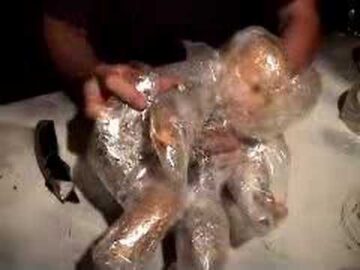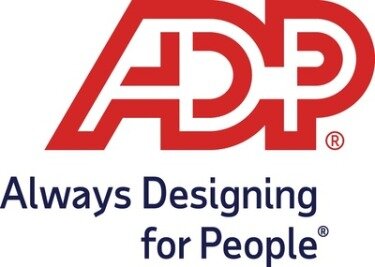
Homework questions can be assigned, with auto-grading and export, to specific learning management platforms, e.g., Canvas, Blackboard, etc. If you are wondering where our planned value came from in this case, it’s simply the planned % of work completed x budget at completion. In this case, we are 50% of the way through the schedule on a $5,000,000, so the planned value at this point in the project was $2,500,000.

These T-accounts are debited or credited as costs are applied to WIP. The most important similarity, for my purposes anyway, is that this pattern involves developing an expectation and comparing actual results against that expectation in a controlled and careful way. If you understand that, you will have a much more complete understanding of variance analysis. Actual profit is driven by (1) budgeted revenue and cost and (2) variances.
Direct labor and direct material variances largely follow the same pattern demonstrated by the revenue price and quantity variances. So multi-product firms often break down sales volume variance into sales mix and yield variances. I cover this later in Section 7.8 because mix and yield variances are relevant to cost variances as well.
What Does Cost Variance Mean?
Each unit requires 0.25 direct labor hours at an average rate of $18 per hour for a total direct labor cost of $4.50 per unit. During the period, 45,000 direct labor hours were worked and $832,500 was paid for direct labor wages. Standard costs and quantities are established for each type of direct labor.
- For example, assume the firm purchases 10 ounces of a rare earth metal for $100 per ounce.
- Refer to the total direct labor variance in the top section of the template.
- Within the relevant range of production, fixed costs do not have a quantity standard, only a price standard.
- So I don’t think it’s fair to call this process a truly “scientific” process.
Fixed overhead, however, includes a volume variance and a budget variance. So, Chapter 4 and 6 were presented using the “Full Absorption” method, meaning all product costs (i.e. direct materials, direct labor, and overhead) were considered inventory costs. In Chapter 5, I said that ABC can include SG&A costs in inventory, and thus it is a departure from full absorption. We’ll cover what is considered an invetoriable cost under throughput accounting and direct costing in Chapter 8. Overapplied or underapplied overhead is basically the same as a favorable or unfavorable variance, it just isn’t broken up yet into the individual variable and fixed overhead variances.
Do you already work with a financial advisor?
Contrast this to standards for cost variances, which as I say below are always per unit numbers. Standard quantity is the quantity of an input (direct labor, direct materials, or overhead) per unit produced. Just because that’s the standard quantity doesn’t mean you can plug that number in for actual or budgeted quantity.
This is unfavorable because they actually spent more per unit than the standards allowed. The cost variance formula is a simple one, which is part of its strength. A company which stays on top of project cost management and keeps accurate track of progress can easily calculate and use cost variance. A cost variance is the difference between an actual and budgeted expenditure. A cost variance is considered to be a favorable variance when the actual cost incurred is lower than expected. The variance is considered to be an unfavorable variance when the actual cost incurred is higher than expected.
This is the only type of variance on the list that is good when it is negative. If your budgeted (or expected) sales total was $1,000 and your actual sales total was $2,000, then your sales variance is -$1,000. When actual sales exceed budgeted sales, your variance will be negative—but your profits will be positive.
Total variable manufacturing costs variance
An investigation may reveal that employees took longer than 0.25 hours to make each unit, which could mean additional training or another appropriate solution. The volume variance is the difference in the actual versus expected unit volume of whatever is being measured, multiplied by the standard price per unit. The difference between the actual overheads incurred and the allowed variable overheads based on the actual hours worked is known as Variable Overhead Expenditure Variance (VOEV). A company might achieve a favorable price variance by buying goods in bulk or large quantities, but this strategy brings the risk of excess inventory. Buying smaller quantities is also risky because the company may run out of supplies, which can lead to an unfavorable price variance. Businesses must plan carefully using data to effectively its price variances.

Both the methods are very useful and should be understood by management accountants for taking managerial decisions. (a) Buying of substitute materials because of unavailability of standard materials. Harold Averkamp (CPA, MBA) has worked as a university accounting instructor, accountant, and consultant for more than 25 years. Upgrading to a paid membership gives you access to our extensive collection of plug-and-play Templates designed to power your performance—as well as CFI’s full course catalog and accredited Certification Programs.
EVM – Cost Variance
Since fixed costs, by definition, do not vary with volume, the static budget and the flexible budget are the same for fixed overhead costs. To avoid confusion I do not use the term flexible budget for this variance. what is columnar Unlike other variances, the firm starts from what was applied to WIP via the PDOH rate (i.e. Applied Cost, as shown below). This wasn’t a problem with direct labor because it’s a relatively perishable input.
The $200 difference has to be a debit to the direct materials price variance account. To calculate the cost variance for variable overhead, you’ll first need to find the “standard variable overhead rate per hour.” This is the sum total of variable costs incurred in an hour of production. For example, if you pay $2 per unit shipped and produce 10 units per hour, your standard shipping rate per hour would be $20. Another large expense for any project or company is the cost of labor. The hourly rate for a worker includes their wages, taxes the business must pay for the worker, as well as any benefits.
How Is the Cumulative Cost
When students hear this they inevitably ask me where the rest of the difference went. The difference is sitting in the warehouse, waiting to be put into production. With a little investigation the firm could use this variance to develop a plan to improve profits next period.
How To Manage Your Variance Profit Cycle – Chief Executive
How To Manage Your Variance Profit Cycle.
Posted: Wed, 02 Aug 2023 18:19:30 GMT [source]
This variance is unfavorable because the actual hours worked exceed the standard hours allowed. The overall rate variance is favorable since the actual rate incurred was lower than the standard rate allowed. Brad spent $9,000 more on variable manufacturing overhead than he projected. The standard and actual amounts for direct materials quantities, prices, and totals are calculated in the top section of the direct materials variance template.
Earned Value Management
Quantity standards indicate how much labor (i.e., in hours) or materials (i.e., in kilograms) should be used in manufacturing a unit of a product. In contrast, cost standards indicate what the actual cost of the labor hour or material should be. Standards, in essence, are estimated prices or quantities that a company will incur. As mentioned above, materials, labor, and variable overhead consist of price and quantity/efficiency variances.

The articles and research support materials available on this site are educational and are not intended to be investment or tax advice. All such information is provided solely for convenience purposes only and all users thereof should be guided accordingly. It is formed by difference between actual expenses and budgeted expenses, multiplied by the budgeted level of activity. Since the labor efficiency variance is negative, no bonus is paid to the workers. An unfavorable overhead spending variance indicates excessive levels of expenditure.
